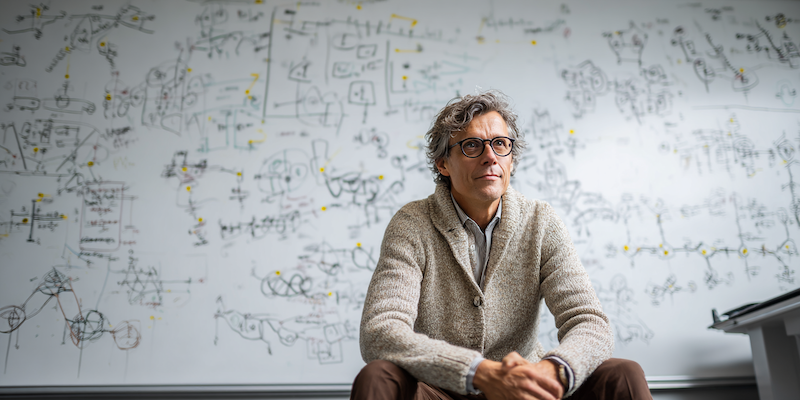In coaching, models are everywhere. The GROW model, the CLEAR model, SMART goals, and countless others have become staples of training rooms and textbooks. They’re neat, accessible, and provide reassuring scaffolding for both new and experienced coaches.
Used well, they can give structure to a session, offer prompts when a conversation feels stuck, and ensure that key dimensions of the client’s situation are considered.
But there’s a shadow side.
When coaches become over-attached to models, they risk losing sight of the very heart of coaching: the live, unfolding encounter between coach and client.
Instead of being deeply present, the coach begins to mentally “tick boxes,” looking for the next stage of the framework rather than listening for the next opening in the client’s story. The coaching session becomes a journey through a model, not a journey with the client.
It’s not that models are bad — they’re valuable training tools and occasional reference points. The problem comes when they stop being background resources and start being foreground scripts. When that happens, coaching can become mechanical, formulaic, and stripped of the qualities that make it transformative.
So what does it mean to move beyond constructs and reclaim the essence of practice? It means focusing less on models and more on the core behaviours that define the craft of coaching.
The Core Behaviours That Bring Coaching Alive
Curiosity
At its simplest, coaching is curiosity in action. When a coach brings a spirit of genuine interest — not to prove, not to diagnose, not to solve — the client feels truly seen. Curiosity is the antidote to assumption, the driver of fresh perspectives, and the energy that keeps coaching exploratory rather than prescriptive.
Questioning
Models often prescribe types of questions, but questioning in its essence is an art form. Good coaching questions are not about clever phrasing or perfect timing, but about what they invite the client to notice.
Open questions expand possibilities, hypothetical questions spark imagination, rhetorical questions provoke, and carefully chosen closed questions focus attention. The real skill lies in knowing what will serve the client in that moment, not in following a preset sequence.
Silence
Few models talk about silence, yet silence is one of the most powerful interventions in coaching. It can feel uncomfortable — for coach and client alike — but it’s in silence that insights often crystallise.
Allowing silence means trusting the client, trusting the process, and trusting that meaning can emerge without being filled by words.
Presence
Presence is the coach’s capacity to be fully available: body, mind, and attention aligned to the client.
When presence is strong, the client senses it — a quality of focus that makes them feel safe to explore. Presence isn’t about doing, it’s about being. Models can support presence, but they can never substitute for it.
Deep Listening
Listening in coaching isn’t passive. It’s active, layered, and attuned.
Coaches listen for what’s said, what’s unsaid, and how it’s said. They notice shifts in energy, patterns in language, and the resonance behind words. Deep listening makes it possible to reflect back with precision, offering clients mirrors they may never have encountered before.
Holding Space
To hold space is to create a container where clients can explore without fear of judgment or pressure to perform.
It’s not about fixing or filling, but about cultivating an atmosphere of trust and permission. It allows vulnerability to surface and deeper truths to be explored.
Focusing
In a world of distraction, one of the coach’s gifts is helping clients focus. Focus doesn’t mean narrowing prematurely, but rather helping the client discern what truly matters.
Whether in decision-making, values clarification, or goal exploration, focusing guides the client to place their attention where it can have the greatest impact.
Challenging
While curiosity and listening provide openness, challenge introduces stretch. A coach who never challenges risks collusion; a coach who challenges too soon risks rupture. The art is in challenging constructively — holding up contradictions, naming patterns, or inviting clients to consider new perspectives — always in service of their growth.
Supporting Decision-Making
Ultimately, many clients come to coaching at points of choice. A coach doesn’t decide for them but helps them clarify, weigh, and own their decisions. By shining light on the assumptions, values, and fears that shape decision-making, coaches empower clients to act with greater confidence and alignment.
Models as Maps, Not Territories
So where does this leave models?
They’re not to be discarded, but reframed. Models are maps: useful for orientation, but never the territory itself. They help us notice certain landmarks, but they can also blind us to what lies off the path.
When coaches cling too tightly to a model, they risk coaching the framework rather than coaching the person. When they treat models as background resources, they can draw on them fluidly when helpful, and let them go when not.
The aim of coaching is not to move someone neatly through a model. The aim is to help them think more clearly, feel more deeply, and act more purposefully. Curiosity, questioning, silence, presence, and space are the real tools of the craft. Models may support these, but they must never replace them.
Reclaiming the Essence
To reclaim the essence of coaching practice is to trust that being with the client — deeply, attentively, and without a script — is enough. It’s to remember that while models offer structure, it is the human qualities of curiosity, presence, and courage that transform conversations.
The most effective coaches aren’t those who master every model. They’re the ones who master themselves: their attention, their capacity to listen, their willingness to sit in silence, their ability to hold and challenge, and their commitment to stay curious.
Constructs have their place. But it’s curiosity — alive, present, unbounded — that will always be at the heart of coaching.
- Author Details







